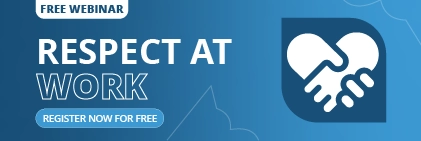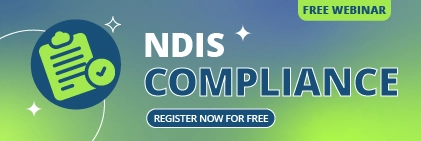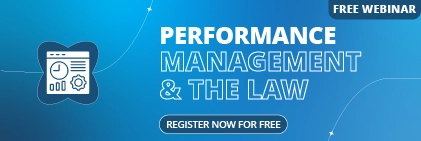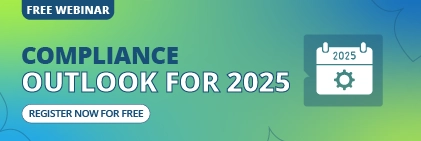In today’s fast-paced business world, effectively managing your team isn’t just about ticking HR boxes; it’s a strategic move that can boost your productivity, keep everyone engaged, and make your workplace happier and more efficient. Australian businesses, whether startups or big corporations, are increasingly looking to innovative Employee Management Systems (EMS) to smooth out their operations, stay compliant, and build a thriving team.
Think about it: an all-in-one EMS can completely transform how you handle your people. It covers everything from onboarding new hires to processing payroll, managing performance, and keeping communication flowing. These platforms free up your HR teams and managers by taking over those tedious, repetitive tasks and giving you valuable insights. What does that mean? You can focus on empowering your employees and helping your business grow.
We’ve done the legwork for you and compiled a list of the top 10 Employee Management Systems (EMS’s) that fit the Australian market. For each one, we’ll dive into its main features, what’s great about it, any downsides, who it’s best for, and how its pricing works. Our goal? To help you make the best decision for your unique business.
1. Sentrient
Sentrient is an Aussie-born employee management software company specifically designed for small to medium businesses but works for larger organisations as well. Its strong focus on local compliance and an AI-powered system built to reduce HR paperwork make it stand out.
Key Features:
- Handles all your HR and compliance needs
- Automates onboarding and offboarding (no more mountains of paperwork!)
- Makes leave management a breeze
- Helps with performance reviews
- Includes a learning management system (LMS) for training
- HR templates and policies (saves so much time!)
- Easy document management
- An AI assistant to help you out
Pros:
- Seriously good at keeping you compliant with Australian regulations.
- The system is easy to get the hang of.
- A comprehensive, all-in-one solution for your core HR tasks.
- Those AI features can speed things up.
Cons:
- Some more advanced features might take a little time to master.
- You’ll usually need to contact them directly for specific pricing details.
Best Suited for: Small to medium Australian businesses or larger ones that care about local compliance and want a robust, all-in-one HR solution.
Pricing: Custom pricing, you’ll need to get in touch for a quote.
2. Employment Hero
Employment Hero is a powerhouse platform that combines HR, payroll, recruitment, and employee engagement tools. Their big idea? To simplify employee management by automating processes and giving you one clear place for all your employee information.
Key Features:
- Integrated HR and payroll (a real time-saver!)
- Automated onboarding and offboarding
- Manages leave and attendance effortlessly
- Helps with performance reviews and goals
- Includes a recruitment module (Applicant Tracking System)
- Offers employee benefits and discounts (a nice perk!)
- Employee self-service portal
- Learning management system
Pros:
- An excellent all-in-one solution for Aussie businesses.
- They’re super focused on ensuring you comply with Australian employment laws.
- The employee benefits platform can boost team morale.
- Great for businesses that are looking to grow.
Cons:
- Some of the fancier features might be on higher-priced plans.
- Customer support can sometimes be a bit hit-or-miss.
Best Suited for: SMEs in Australia that need a complete HR, payroll, and compliance solution.
Pricing: Starts with a base fee plus a per-employee per-month charge, with different tiers for features (e.g., Core HR, Payroll). Specific pricing often depends on your exact needs.
3. WorkIt
WorkIt seems to be a more focused, perhaps minor, player in the Australian market. We can gather that they’re often about simplifying employee rostering and time tracking, especially for specific industries.
Key Features:
- Employee rostering (who works when)
- Time and attendance tracking
- Integrates with payroll
- Employee communication tools
Pros:
- Likely built with Australian labour laws specifically in mind.
- Probably more straightforward for just rostering and time tracking.
Cons:
- Not as comprehensive as other platforms for a complete HR suite.
- It’s a bit harder to find public info on all their features, and pricing is a bit harder.
- Might not be the best fit if you need advanced HR modules.
Best Suited for: Small businesses in sectors like hospitality or retail, where complex rostering and tracking employee hours are key priorities.
Pricing: Not publicly available; you’ll probably need to ask them directly.
4. ELMO Software
ELMO Software is a big name in Australia for cloud-based HR and payroll. They offer a modular product suite that covers the entire employee journey, from hiring new employees to managing payroll and performance.
Key Features:
- Recruitment and onboarding (making new hires easy)
- Payroll and rostering
- Core HR and managing employee data
- Performance management
- Learning and development (LMS)
- Work health and safety (WHS)
- Expense management (no more paper receipts!)
Pros:
- A comprehensive and flexible system lets you pick and choose what you need.
- Strong local support and great at keeping you compliant.
- ISO-certified, which means top-notch security and data protection.
- Can grow with your business, no matter the size.
Cons:
- Setting it all up can take some time because there are so many features.
- It can be a bigger investment compared to simpler solutions.
It is Best Suited for Medium to large-sized Australian businesses that want a powerful, integrated, and flexible HR and payroll system.
Pricing: Custom pricing based on the modules you choose and how many employees you have.
5. Sage HR (Sage Australia)
Sage is a global giant in business software. Their Sage HR offering is a simple, flexible, and user-friendly solution designed to manage employee data, track performance, and automate HR tasks. For Australian businesses, it plays nicely with Sage’s accounting solutions.
Key Features:
- Manages your employee database
- Tracks leave and attendance
- Helps with performance management
- Recruitment and onboarding tools
- Employee self-service portal (so employees can manage their info)
- Reporting and analytics (to get insights)
- Timesheets and expense management
Pros:
- Easy to use and set up, especially if you already use other Sage products.
- Can scale up as your business grows.
- Good reporting and analytics features.
- It’s a reliable global brand with local support here in Australia.
Cons:
- They might not have all the super-specific niche features some HR-only platforms offer.
- You might need to integrate complete payroll with other Sage products.
Best Suited for: Small to medium businesses in Australia, especially those already using or thinking about Sage accounting software, who want a straightforward and integrated HR solution.
Pricing: Subscription-based, usually tiered depending on features and employee numbers. You’ll need to check with Sage Australia for specific local pricing.
6. HappyHR
HappyHR is an Australian-designed, cloud-based HR Information System (HRIS). It’s built specifically to simplify HR management for small—and medium-sized businesses, offering a wide range of tools to tackle HR tasks effectively.
Key Features:
- Employee records and document management
- Performance management
- Leave and attendance management
- Onboarding and offboarding (streamlined!)
- Award and compliance management (a big plus for Australia)
- HR templates and policies
- Access to HR advice and support
Pros:
- Explicitly built for Australian SMEs.
- Strong focus on compliance, and they even offer HR advice.
- It’s cloud-based, meaning you can access it from anywhere.
- Simplifies tricky HR tasks with ready-made templates.
Cons:
- Might not have all the super advanced features in enterprise-level systems.
- Customisation might be limited if you have unique business needs.
Best Suited for: Small to medium Australian businesses looking for a straightforward, compliance-focused HRIS with helpful HR templates and advice.
Pricing: Subscription-based, often priced by the number of employees. You can usually find specific pricing on their website or by asking them.
7. Tanda
Tanda is an Australian workforce management platform that excels at rostering, time and attendance, and integrating with payroll. It’s especially popular in industries where people work shifts, offering features designed to smooth daily operations and keep things compliant.
Key Features:
- Smart rostering and scheduling (no more headaches!)
- Time and attendance tracking (including cool options like facial recognition clock-ins)
- Award interpretation (a game-changer for Australian businesses)
- Seamless payroll integration
- Leave management
- Employee communication tools
- Reporting and analytics
Pros:
- Fantastic for businesses with complex rostering and time tracking needs.
- Automates award interpretation, so your payroll is always spot on.
- Has a user-friendly mobile app for employees.
- Helps you reduce wage costs and ensures you stay compliant.
Cons:
- It’s not a complete HRIS; it’s more focused on workforce management.
- You might need to integrate it with other HR systems if you need broader HR functions.
Best Suited for: Businesses in industries like hospitality, retail, or healthcare that have hourly or shift-based employees in Australia and need solid rostering, time tracking, and payroll integration.
Pricing: Subscription-based, often priced per month per employee, with different feature tiers.
8. enableHR
enableHR provides comprehensive cloud-based HR and WHS (Work Health and Safety) solutions for the Australian and New Zealand markets. Their primary focus is on offering compliant employment relations advice and tools to help you manage HR risks effectively.
Key Features:
- Manages the entire employee lifecycle (from hiring to when someone leaves)
- Work Health and Safety (WHS) management
- Tools for managing performance and employee conduct
- Document and policy management
- Access to HR advice and templates (super helpful!)
- Online training modules
Pros:
- Strong focus on Australian employment law compliance and WHS.
- Offers robust tools for handling HR risks and disputes.
- Having expert HR advice and legal templates is a huge advantage.
- It’s cloud-based so that you can access it anywhere.
Cons:
- Might feel more geared towards compliance and risk management than broader employee engagement.
- Some users might find the interface a little less intuitive.
Best Suited for: Australian businesses, especially those in industries with strict compliance rules or those who want comprehensive support for employment relations and WHS.
Pricing: Subscription-based, often depending on your business size and the specific modules you need.
9. Rippling
Rippling is a seriously powerful, all-in-one platform that integrates HR, payroll, IT, and even finance. While it’s a global player, its Australian presence offers localised solutions for businesses here to manage their entire employee journey seamlessly.
Key Features:
- Global payroll (yes, including Australian payroll!)
- Core HR (employee data, onboarding, offboarding)
- Benefits administration
- Time and attendance tracking
- Talent management (performance, recruiting)
- IT management (like setting up devices and managing apps – pretty cool!)
- Expense management
Pros:
- It connects HR, payroll, IT, and finance.
- Automates a vast number of tasks across different departments.
- Can scale effortlessly for global and fast-growing businesses.
- Excellent security and compliance features.
Cons:
- It might be a bit much for small businesses because of its extensive features.
- Can be a bigger investment than simpler, more focused HR solutions.
- Setting it up initially might feel complex due to how much it covers.
Best Suited for: Growing Australian businesses looking for a highly integrated and automated solution, especially those with global ambitions or complex IT and financial needs.
Pricing: Modular pricing usually starts with a base monthly fee plus a per-employee fee, with extra costs for advanced modules. You’ll need to get a custom quote.
Choosing Your Perfect EMS: A Few Pointers
Picking the right employee management system can be a big decision, but it can pay off. Here are a few things to keep in mind:
- What are your biggest headaches? Are you drowning in paperwork, struggling with rostering, or just trying to keep up with compliance? Identify your core needs first.
- How big is your team, and how fast are you growing? A small startup won’t need the same system as a large enterprise. Make sure it can grow with you.
- Australian compliance is non-negotiable! Double-check that any system you pick understands and handles Australian employment laws, awards, and superannuation rules.
- Does it play well with others? Can it integrate with your accounting software, CRM, or other business tools? This can save you a lot of manual data entry.
- Is it easy to use? If your HR team and employees find it clunky, they won’t use it. An intuitive interface is key.
- What about support? Can you easily get help if you run into a snag? Look for providers with strong customer support and good training resources.
- Understand the price tag. Don’t just look at the monthly fee; dig into the cost model. Is it per employee, per module, or tiered? Are there any hidden fees?
Ultimately, investing in the right employee management system isn’t just an expense; it’s an investment in your team. By carefully looking at these top providers and matching them with what your business truly needs, you can unlock the full potential of your most valuable asset: your people.
Have you used any of these systems before? Or is there another one you swear by for your Australian business? Share your thoughts in the comments below!
Frequently Asked Questions (FAQ’s)
Choosing an Employee Management System (EMS) can raise many questions. Here are some of the most common ones we hear from Australian businesses. I hope to make your decision a little more straightforward!
1: What exactly is an Employee Management System (EMS)?
An Employee Management System (EMS) is a software platform designed to help businesses manage their workforce in administrative and strategic aspects. Think of it as your central hub for everything employee-related – from hiring and onboarding to payroll, tracking leave, managing performance, and fostering better communication. It’s all about making those processes smoother and more efficient.
2: How is an EMS different from an HRIS or HRMS?
Great question! These terms can sometimes get used interchangeably, but there’s a subtle difference:
- HRIS (Human Resources Information System): This is often seen as the foundational layer. An HRIS primarily focuses on managing core HR data and administrative tasks, such as employee records, basic payroll functions, and some reporting. It’s about centralising information.
- EMS (Employee Management System): This broader term can encompass HRIS functions but often goes a step further. An EMS tends to focus more on management, improving employee experience, boosting productivity, and streamlining workflows through features like performance management, advanced rostering, and communication tools.
- HRMS (Human Resources Management System): This term is sometimes used to describe a more comprehensive system that includes HRIS features plus additional functionalities like talent acquisition, learning and development, and advanced analytics. Some might consider EMS and HRMS to be very similar in scope.
In short, while an HRIS typically involves data and administration, an EMS (or HRMS) offers a broader range of tools to manage and develop your workforce actively.
3: Why do Australian businesses need an EMS? What are the benefits?
For Australian businesses, an EMS offers a lot of benefits that go beyond just saving time:
- Staying Compliant: This is huge in Australia! An EMS helps you navigate complex industrial awards, superannuation rules, and Fair Work Act requirements, reducing the risk of costly penalties.
- Boosting Productivity: Automating tasks like leave requests, timesheets, and payroll frees your team to focus on more strategic work.
- Happier Employees: Self-service portals empower staff to manage their information, request leave, and access payslips, making them feel more in control.
- Better Decision-Making: Having all your employee data in one place can give you valuable insights into trends, performance, and staffing needs.
- Streamlined Processes: From onboarding a new hire to conducting performance reviews, an EMS standardises and simplifies workflows, reducing manual errors and administrative headaches.
- Improved Communication: Many systems include internal communication tools, ensuring everyone is on the same page.
4: How much does an Employee Management System cost in Australia?
This is like asking “how much does a car cost?” – it depends! Pricing for EMS platforms in Australia can vary wildly based on several factors:
- Number of Employees: Most systems charge “per employee, per month”. The more employees you have, the higher the total cost.
- Features/Modules: A basic system for just payroll and leave will be cheaper than one that includes recruitment, performance management, and advanced analytics. Some providers offer different “tiers” or allow you to pick specific modules.
- Setup and Implementation: Some systems have one-off setup fees, especially if your business has complex needs or requires significant data migration.
- Support & Training: While basic support is often included, premium support or extensive training might come at an extra cost.
As a rough guide, you might look at anything from $50 to a few hundred dollars per month for small businesses. For larger companies with more extensive needs, monthly costs can range from hundreds to thousands of dollars. Always ask for a detailed quote that outlines all potential costs!
5: What should a small business in Australia look for in an EMS?
If you’re a small business owner in Australia, here are some key things to prioritise:
- Australian Compliance: This is absolutely number one. Ensure the system handles Australian awards, payroll, superannuation, and Fair Work regulations.
- Ease of Use: You don’t want an overly complicated system. Look for an intuitive interface that you and your employees can easily navigate.
- Core HR Functionality: At a minimum, you’ll likely need leave management, time and attendance, payroll integration, and employee record management.
- Scalability: Choose a system that can grow with you. You don’t want to switch systems every year.
- Cost-Effectiveness: Balance features and your budget. Don’t pay for bells and whistles you won’t use.
- Good Support: As a small business, you might not have a dedicated HR team, so reliable customer support when you need it is crucial.
- Integration: Does it connect with your existing accounting software (like Xero or MYOB) or other business tools?
6: Can an EMS help with employee engagement?
Absolutely! An EMS can play a significant role in boosting employee engagement. How?
- Transparency: Employees can easily access their payslips, leave balances, and company policies, reducing confusion and fostering trust.
- Self-Service: Empowering employees to manage their data and requests gives them a sense of autonomy and convenience.
- Performance Feedback: Systems often include tools for setting goals, tracking progress, and facilitating regular feedback, vital for growth and motivation.
- Better Communication: Features like announcement boards, shared calendars, and internal messaging can keep everyone informed and connected.
- Fairness: Automated time tracking and award interpretation ensure accurate pay, reducing disputes and building confidence in management.
When employees feel supported, informed, and valued, their engagement naturally improves.





